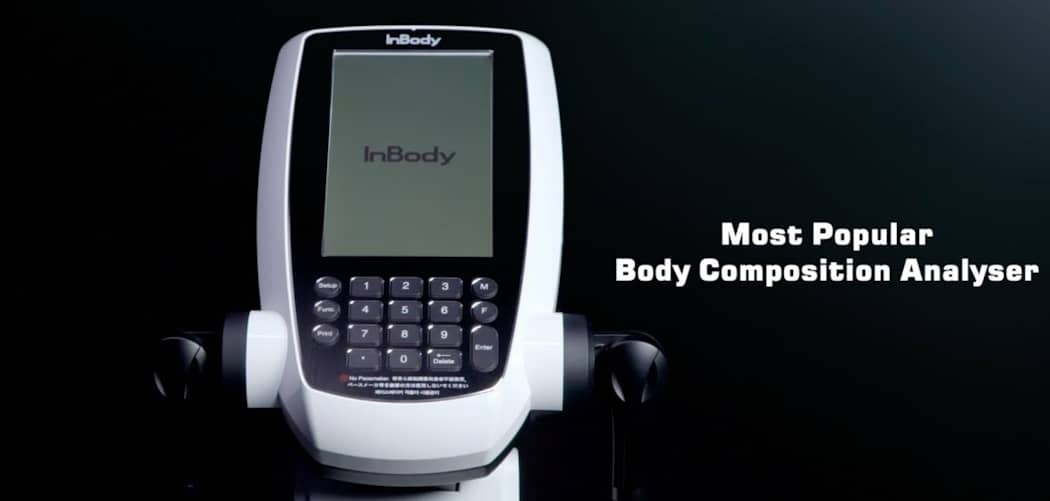Understanding Your Body Composition

Body composition is a way of dividing your body into its component parts. It provides health professionals with vital detailed information on a person’s general health and is far more valuable than just knowing a person’s weight or weight. There are 4 key components of body composition: Water; Proteins; Minerals; and Fat.
In this article we'll run through the breakdown of the body and why this is important to understand in the context of body composition analysis testing, through whichever means. GymEquipment.co.uk chooses to work with two key providers of body composition analysis machines, seca and InBody.
The Four Components of Body Composition
The human body is mostly made up of water. Fat, muscle, and blood all contain water. Protein is found in the muscles, organs, and bones. Minerals are found in the blood stream and bones and fat, is primarily stored in the body as an energy source. These four components are then further divided into two groups-those that represent fat mass and fat free mass. Using 8-point Bioelectrical Impedance Analysis and controlled hand and feet positions is how the seca TRU manages to get such accurate results.
Fat Mass and Fat Free Mass
Fat mass is our fat. Fat performs several different functions in our body including protecting our organs, insulating our body, regulating our body temperature, and providing us with energy. Fat free mass refers to all our internal organs, skeletal muscle mass and body water.
Why is Understanding Body Composition Beneficial?
Body composition is beneficial for several reasons. Firstly, it will tell us how much total body fat we have and, as we know that excess body fat is related to health conditions including cardiovascular disease, increased blood pressure, obesity and diabetes, then this is an important piece of the health jigsaw. Secondly, body composition can be monitored so individuals can see if the changes they are making in their diet, fitness programmes and lifestyle are affecting their fat mass and muscle mass. This can ensure that people can see what works and what doesn’t work and then adapt their diet or exercise programmes accordingly.
Finally, body composition analysis is also about moving the conversation on from being ‘thin’ or being ‘overweight’ to a conversation about what is ‘healthy’. It aims to highlight the misunderstanding that being thin is in some way healthy. It is ultimately about understanding how an individual’s body is made up from the inside so that considered changes can be made to help create a healthier body and longer life.
What is the Difference Between Body Composition and BMI?
Essentially BMI has been commonly used to help people understand how healthy their weight is. It is based on how your total weight compares to your height. So you take your total weight in kg and divide it by your height in metres squared. The results are shown as unit kg/m2. Categories are then created which tells you what your result falls into. These categories include ‘normal’,’ overweight’, ‘obese’ etc.
The problem with BMI is that it doesn’t give the detail of muscle or fat mass. So you could have two people, same weight and same height therefore the same BMI but actually one could be less healthy than the other as they have more body fat and less muscle.
How is Body Composition Calculated?
BMI
There are several ways body composition can be calculated. Firstly there is BMI which we have already mentioned. We have highlighted some of the weaknesses of BMI although we should also say that one of its great benefits is that there is a lot of national reference data available as it has been such a well-used tool.
Skinfold Test
Another body composition technique is the skin fold test. As the title suggests skin fold calipers pinch the body in various places-usually the chest, thigh and abdomen to measure the skinfold thickness. These measurements are entered into an algorithm alongside other data such as gender and age to create a body fat percentage. The downsides of this method of testing is that it only measures subcutaneous fat and is prone to human error. Another concern is the equipment itself. The calipers have a maximum measurement of 45/55 mm, so those people who are obese or very overweight are not able to be tested. Others have also mentioned that if the skinfold at the triceps is used then it is easy to mistake tricep muscle for body fat. The one group that can be well tested however using this method are children, as the majority of their body fat is subcutaneous.
Hydrostatic Weighing
This method uses body weight on land and in water to establish body composition. It applies the Archimedes principle that a buoyant force on a submerged object is equal to the weight of the fluid that is displaced by the object. A person with more muscle mass will weigh more under water than a person with a high percentage of body fat. This method has fairly high levels of accuracy.
Air Displacement BodPod
Carried out in an air displacement chamber, this method measures pressure responses and considers weight, age, gender, height and, using the formula that density equals mass over volume, it will be able to estimate how much fat mass and fat free mass a person has. The main negative of this method is that BodPods are only really to be found in medical premises, so this is not a method widely available to the public.
DXA/DEXA scanning
This is probably the most accurate way to work out body composition, but it involves the use of x rays to assess how much muscle mass and fat mass is in the body, and where the fat and muscle is in the body.
Bioelectrical Impedance Analysis (BIA)
BIA uses a weak electric current flowing through the body to measure body composition. It works because different body tissues have different water content so the electrical current will pass through muscle, fat and bone at different speeds. Body fat for example creates greater resistance(impedance) to the current than lean mass. Lean tissues by comparison are highly conductive. In BIA a calculation is then done according to the impedance of the current and a body composition estimate is produced.
As leading providers of BIA equipment both seca and InBody are good to see how this form of body composition has been developed and made readily available to people. Inbody have developed medical grade equipment that can be used in the home, gyms and health centres. What sets them apart is how they have developed BIA technology to create accurate body composition data. So for example the electrodes used to measure impedance use an 8-point touch, two thumb electrodes, two palm electrodes, two sole electrodes and two heel electrodes. This 8-point use creates high reproducibility.
Inbody also use multiple frequencies, both high and low, to create really precise water analysis. These different frequencies mean they can measure intracellular and extracellular water more accurately. Inbody also measure the body in five cylinders-the left arm, the right arm, the left leg, the right leg, and the trunk. This separation of the body again creates greater accuracy. Finally, InBody use no empirical data in their body composition results. This is important as empirical data can be helpful if your body is ‘typical ‘of someone your gender, age and ethnicity but if you are a typical in some way then empirical data will not account for that.
Where Can You Get Your Body Composition Calculated?
Depending on the method you choose there are a number of options, but many of the methods talked about are available in nutrition clinics and in gyms and health clubs. For BIA there are a number of products you can buy for use at home, and you will also find them in gyms and health centres.
Both Seca and InBody have a range of products including a portable body composition machine. DEXA scans are not as widely available but are offered in some Universities. For skinfold assessments we would recommend that you always use an accredited anthropometrist, accredited by the International Society for the Advancement of Kinanthropometery.
References
National Library of Medicine





